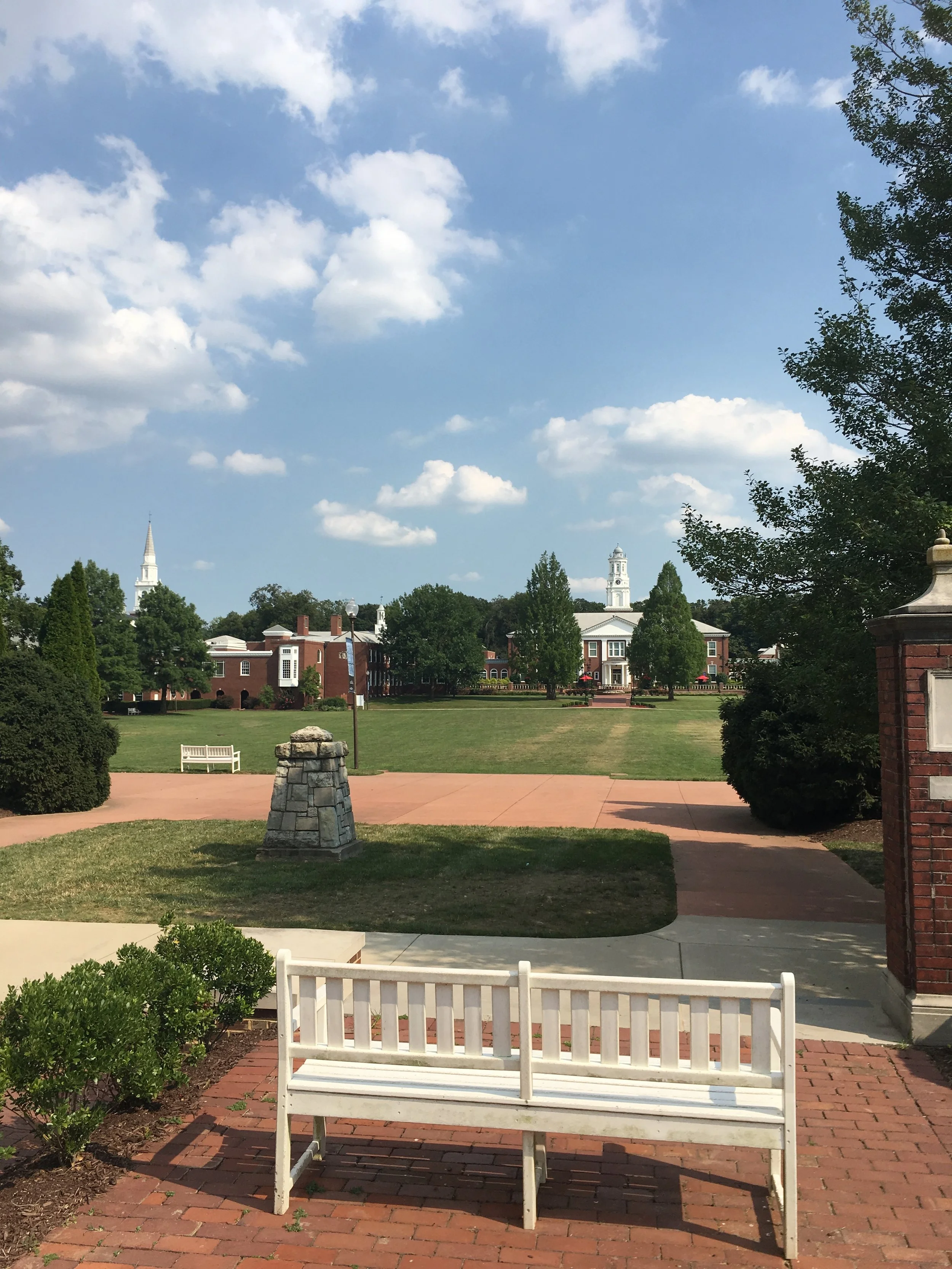In 2008 God opened the door for a recently married couple to start their lives in North Carolina to attend Southeastern Baptist Theological Seminary. My time at SEBTS was one of the most formative in my life. It was at SEBTS where I was encouraged like never before to become a better worshipper of God. Becoming a better worshiper of God means learning to hear his voice. Hearing his voice means listening to Scripture. SEBTS taught me to read Scripture like never before.
My first encounter with reading Scripture as God intends came during Christian Theology I with Dr. Steve McKinion. Dr. McKinion challenged me to learn the language of the Bible and confronted me to make sure that I didn't just know about the Bible but knew the Bible. Knowing the Bible comes in a particular way – interpreting all Scripture in light of the definitive revelation of God, our One Lord Jesus Christ. All of Scripture, not just the Gospels or the New Testament, but also Genesis, Deuteronomy, Judges, Proverbs, all of Scripture.
The second direct encounter with reading Scripture the way God intends came during Old Testament I. Dr. Tracy McKenzie challenged us by telling us that every text has a context and the most immediate context of every text is its canonical context. Canonical context? The context of the Canon seeks to answer what Leviticus has to do with Revelation, what Genesis has to do with Matthew, and looks at the whole Bible as Christian Scripture. Such an approach seems trivial, but I noticed in my thinking that I was guilty of missing the grand narrative of Scripture. Maybe you have done the same?
For example. We all know the story of David killing the giant Goliath. Often this story is told in the context of defeating our giants. But what if the story of David killing Goliath is much bigger than you defeating fear or guilt? What if we saw the story of David and Goliath in the light of the canonical context where a promised seed of a woman will come to crush the head of a serpent and bring peace to the lovers of God? Remember where David hit Goliath? Remember what David did with Goliath's sword to Goliath's head? All of these are clues to cue us into what David killing Goliath has to do with God's plan to bring peace to the world. Or, when Jesus calms the sea we often interpret it by saying, "Jesus can calm the storm in your life." But what if this story was bigger than our lives? What if the story intends to answer the question of the disciples when they said, "Who is this that even the seas obey?" The question of the disciples interprets the story as about the God who is bringing order from chaos much as he did in the beginning as he brought the seas into being.
This interpretative method is not new even though I missed it somehow. This method of interpretation is as old as Genesis 1:1. How can we be sure? Remember Jesus' words to the disciples on the road to Emmaus in Luke 24:25-27:
And he said to them, "O foolish ones, and slow of heart to believe all that the prophets have spoken! Was it not necessary that the Christ should suffer these things and enter into his glory?" And beginning with Moses and all the Prophets, he interpreted to them in all the Scriptures the things concerning himself. (ESV)
"Moses and the Prophets" is shorthand for referring to the Hebrew Bible. Jesus says in this passage that every page of Scripture whispers his name. Many have longed to hear the sermon that Jesus preached that day to two disciples on the road to Emmaus. But what if we can read the Bible as Jesus did? What if we can see every text in its canonical context? What if we interpreted every passage in light of the grand story of God saving the world through the Son? I think we can.
Just last week I had my first seminar as a new student in a new program at what for me is a new school. I entered The Southern Baptist Theological Seminary in Louisville, Kentucky to study Biblical Theology as a Doctoral student (DMin). Dr. Jim Hamilton, the director of the program at SBTS, defines Biblical theology in this way:
"Biblical theology seeks to uncover the theology contained in the Bible itself, tracing the development of the Bible's themes through redemptive history in its canonical shape. This brief, inexhaustive consideration of the theme of corporate prayer will follow the salvation historical storyline as it unfolds from the Law, Prophets, and Writings of the Old Testament into the Gospels and Acts, the Letters, and the Apocalypse in the New."[1]
Over the next three years, I get the privilege of learning to read the Bible like never before. Since my introduction at SEBTS to my continued enrollment at SBTS, I seek to read the whole Bible as Christian Scripture and not only preach it as such but learn to love the God who has revealed himself in Scripture as the God of salvation whose glory will soon cover the earth as the waters cover the sea.
The Bible is more than a guidebook for Christian living; more than a book of great heroes of the faith; more than a collection of disconnected stories with a moral lesson; more than a retelling of historical events; the Bible is the true story of the whole world; a theological work that tells a story of a great God whose has conquered a great enemy so that his people can praise him for eternity. For the rest of my life I am dedicated to reading the Bible in this way, won't you join me?
[1] “A Biblical Theology of Corporate Prayer,” accessed July 24, 2017, https://www.9marks.org/article/biblical-theology-corporate-prayer/.

